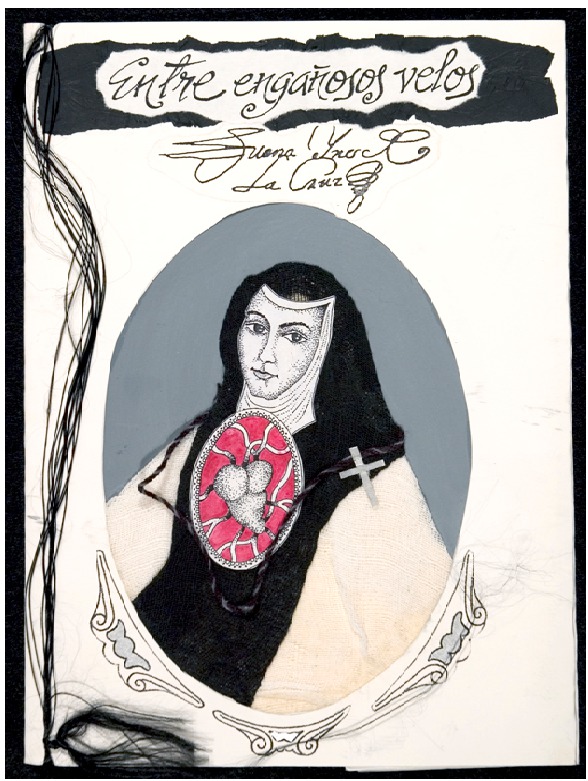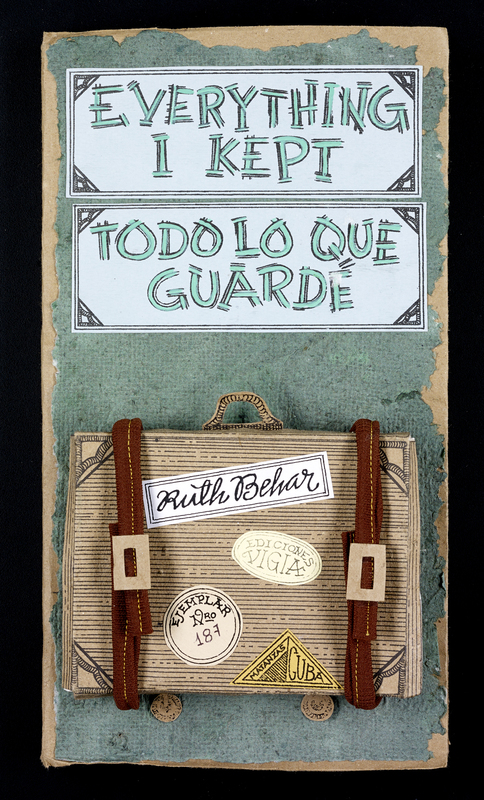About the Exhibition
This exhibition was created to promote our collection of Cuban artists' books. We also spotlight the work of Rolando Estévez, as his role with all aspects of this collection has both offered a cohesive focus and opportunities for engaging programming and events.
We invite visitors to explore these beautiful and evocative images from the comfort of a digital screen. And, if you are inclined to visit our Reading Room to study and page through these items, you are welcome to visit us. Learn more about requesting these items for on-site discovery at our website.
Visitors interested in learning more about the work of Rolando Estévez and his impact, are invited to go deeper in a newly published volume from the University of Florida Press: Handmade in Cuba: Rolando Estévez and the Beautiful Books of Ediciones Vigía, edited by Ruth Behar, Juan María Cordones-Cook, and Kristin Schwain.
A Personal Connection: Behar y Estévez
A personal note from Professor Ruth Behar:
"I met Rolando Estévez in 1994 at the Havana Book Fair. This was a time of cataclysmic change in Cuba after the end of the Soviet Period (1961-1989), which ushered in the Special Period (1989). Everything was scarce--food, transportation, and basic necessities like soap. I met Estévez (he uses his last name as his main name) at the entrance of the convention center where the Book Fair was taking place. He had stepped outside to smoke a cigarette and take a break from work at the Ediciones Vigía book stand. We began talking and he showed me some images he had made. He humbly called them "postales" (postcards). They were hand-painted nude figures, bathed in colorful auras, mixed with fragments of lines from poems by Dulce María Loynaz, the great lyric poet who is often described as the Cuban Emily Dickinson. I fell in love with Estévez's work immediately and was thrilled by the harmony he created between image and text. Later I went aside with Estévez and saw the beautiful Ediciones Vigía books that he had designed. These were small editions made out of humble brown kraft paper and each of the two hundred copies of a particular book of poems and stories were handmade into beautiful works of art.
At the time I was writing poems about my re-encounter with Cuba, my native homeland, which I left as a child with my family before I knew what it meant to lose a country. I told Estévez about these poems and he asked me to create Spanish versions so he could read them. Thus began a wonderful collaboration that goes on to this day, of my writing poems in English and Spanish, that found their way to Ediciones Vigía, always in editions designed by Estévez. These poems were always carefully read and edited by Estévez. The books on which we collaborated, and which he designed, include Poemas que vuelven a Cuba/Poems Returned to Cuba; Todo lo que guardé/Everything I Kept, La Cortada, and Broken Streets of My City. More recently, Estévez has chosen to move on and work independently from Ediciones Vigía. He has founded his own independent imprint called El Fortín. I am honored that he has included my poems in a dual edition of three poems by me and three poems by Nancy Morejón in the first book of the imprint, titled Dos Mujeres, Una Isla.
Estévez, who is also a talented poet and writer, shares with me a love of poetry and literature and all the arts. It has been a joy over the years to be able to invite him to the University of Michigan as an Artist in Residency through the Center for World Performance Studies and the Anthropology Department and many other sponsors. As a result of my friendship with Estévez, the University of Michigan was the first American university to obtain copies of the books he designed for Ediciones Vigía. The University of MIchigan is also the first to obtain copies of his first books for his independent imprint El Fortín.
Estévez's lifelong experience working in the theater as a set designer (that is to this day his official job in Cuba, for which he receives a state salary) informs his sense of drama and passion for drama. Over the years his books have become ever more elaborate dramatic productions, where the relation between the cover and the interior is like that of the curtain and the stage, opening up to reveal the mystery hidden inside. His books are often two-dimensional as in the case of the suitcase that opens up on the cover of Todo lo que guardé/Everything I Kept.
On a personal and spiritual level, Estévez is my island counterpart -- I was the girl taken out of Cuba by my parents and he was the boy left behind by his parents when they left in 1969 with his younger sister. He was fifteen at the time and not allowed to leave Cuba because he was considered of military age. When we met, I reminded him of the sister who'd left at the age of eight and never returned. As I told him about the tears I'd shed because my parents didn't want me to travel to Cuba, Estévez nodded sympathetically. He knew in his own flesh the meaning of diaspora, of loss, of how immigration cuts both ways, producing grief for those leaving and those waving goodbye. He had been left behind, I had been taken away: we were each other's mirrors."
Ruth Behar was born in Havana, Cuba, and grew up in New York. She is the Victor Haim Perera Collegiate Professor of Anthropology at the University of Michigan. Among her honors, she is the recipient of a MacArthur “genius” Award, a John Simon Guggenheim Fellowship, and a Distinguished Alumna Award from Wesleyan University. Ruth has worked as an ethnographer in Spain, Mexico, and Cuba, and is known for her humanistic approach to understanding identity, immigration, and the search for home in our global era. She is the faculty-consultant for this exhibition.
Acknowledgments
This online exhibition is drawn from the Special Collections Library's artists' books.
The exhibit curators (Athena Jackson, Nerea Llamas) and faculty consultant, Ruth Behar, appreciate the support and assistance from the following colleagues:
Exhibit items selection
Annette Haines, Art & Design, Field Librarian
Rosa Scobey Moore, (former) Collection Services Coordinator, Special Collections Library
Narrative contributors
Shannon Moreno, Information Resources Assistant Senior
Jennifer Talley, Rare Book Cataloger
Ikumi Crocoll, University Library Associate 2013 – 2014
Rashelle Nagar, University Library Associate 2014 – 2015
Technical & Programming Support
Meghan Musolff, Special Projects Librarian in Library Information Technology
Kathi Reister, Gallery Coordinator/Events Support, Duderstadt Gallery
Randal Stegmeyer, Media Digital Photographer
Lawrence Wentzel, Associate Librarian, Digital Library Production Services
Sarah Kennedy, Public Services Librarian
Anne Elias, Collection Services Specialist, Special Collections Library
Karmen Beecroft, Collection Services Specialist, Special Collections Library
Martha O'Hara Conway, Director, Special Collections Library
Rights and Permissions Statement
The University of Michigan Library has placed copies of these works online for educational and research purposes. These works may be under copyright. If you decide to use any of these works, you are responsible for making your own legal assessment and securing any necessary permission. If you have questions about this exhibit, please contact the Special Collections Library, special.collections@umich.edu. If you have concerns about the inclusion of an item in this exhibit, please contact ask-omeka@umich.edu.
website: http://www.lib.umich.edu/special-collections-library

Teaching with Artists' Books

Gallery


